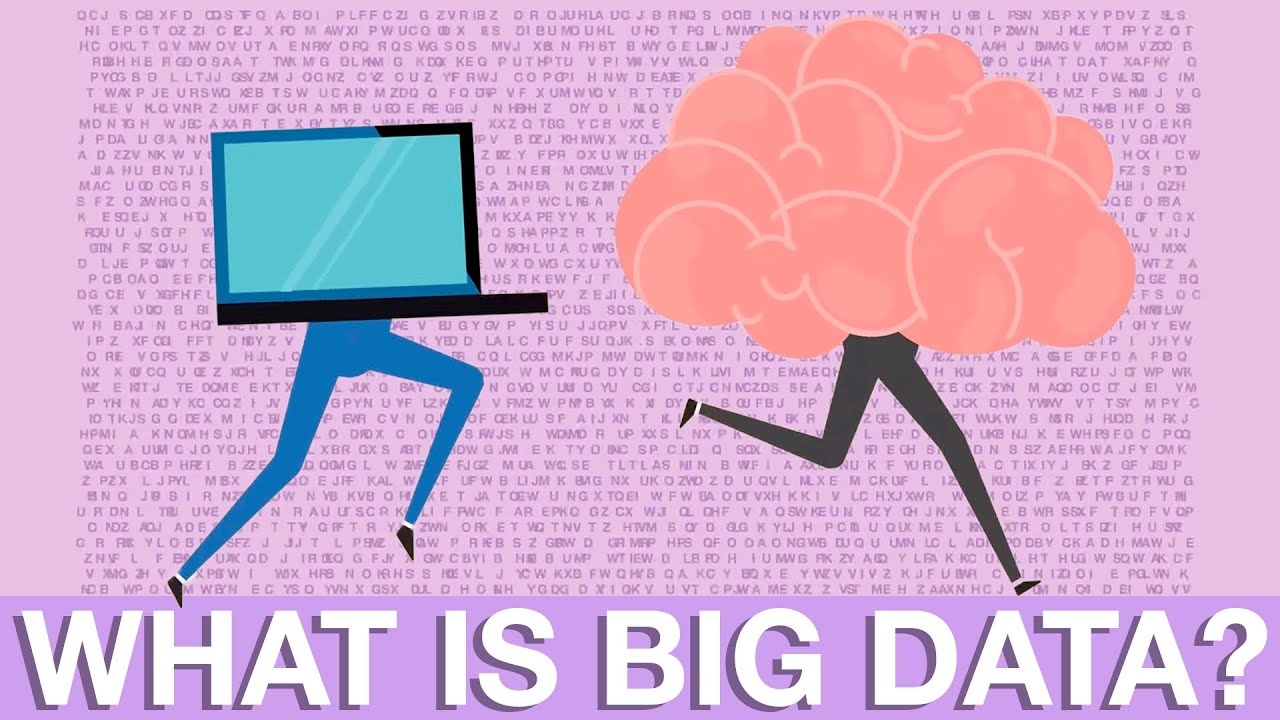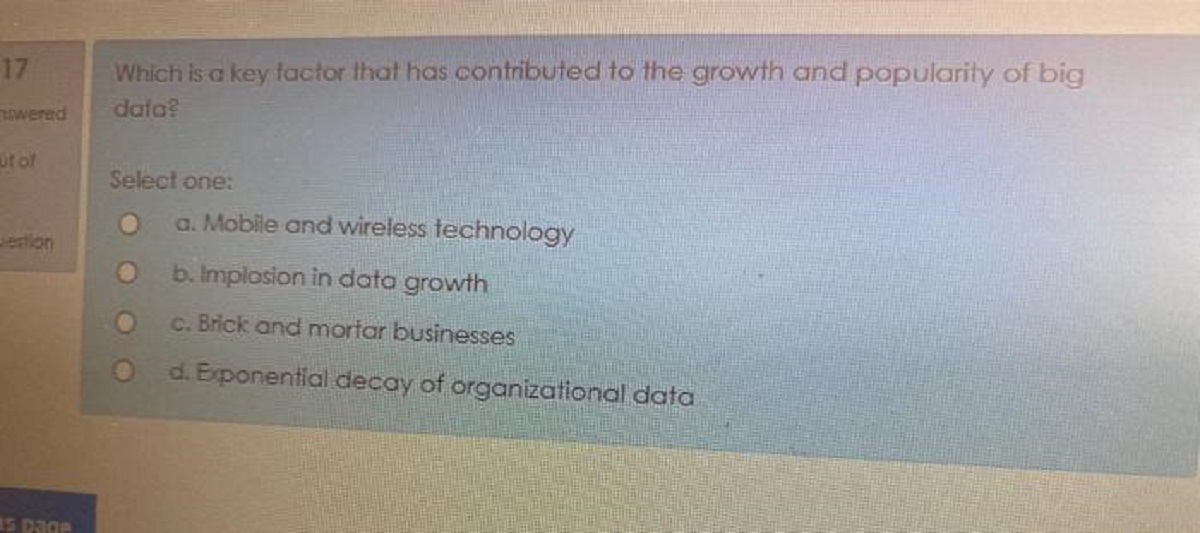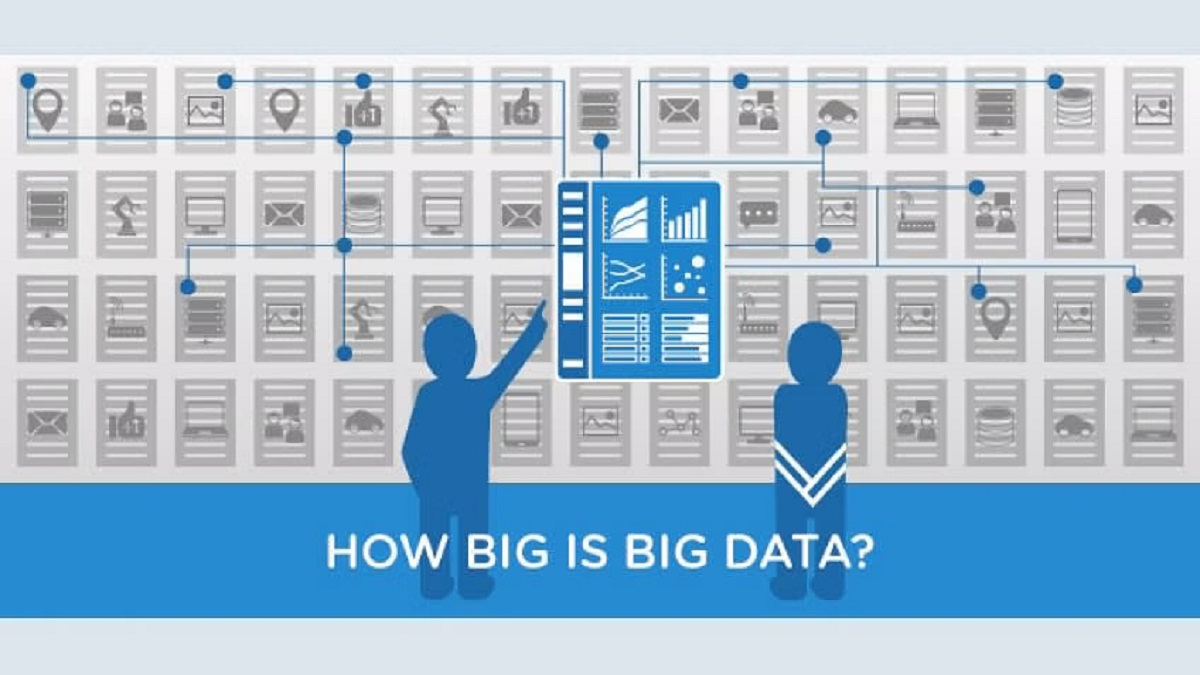Introduction
With the exponential growth of data in today’s digital age, the need for effective data management and analysis has become more crucial than ever. This is where big data platforms come into play. Big data platforms provide organizations with the tools and infrastructure to collect, store, process, and analyze vast amounts of data to extract valuable insights.
But what exactly is big data? Big data refers to the large volume of structured, semi-structured, and unstructured data that organizations accumulate on a daily basis. This data is often characterized by its high velocity, variety, and veracity, making it challenging to manage and analyze using traditional data management tools and techniques.
The emergence of big data has revolutionized the way organizations operate and make strategic decisions. By harnessing the power of big data, businesses can gain valuable insights into customer behavior, market trends, operational efficiency, and more. This enables them to make data-driven decisions and stay competitive in today’s fast-paced business environment.
Big data platforms serve as the foundation for managing and analyzing this vast amount of data. These platforms offer a comprehensive suite of tools, technologies, and frameworks that support the end-to-end process of data management and analysis.
In this article, we will explore the importance of big data platforms, the key components they encompass, and how organizations can choose the right platform to meet their specific needs. We will also highlight some of the popular big data platforms available in the market today.
So, if you’re ready to dive into the world of big data platforms, let’s get started!
What is Big Data?
Big data refers to the massive volumes of data that are generated and collected from various sources at an unprecedented speed. It includes structured data (such as databases), semi-structured data (such as XML and JSON files), and unstructured data (such as social media posts and videos). The concept of big data is characterized by the 3Vs: volume, velocity, and variety.
The first aspect, volume, refers to the enormous amounts of data that organizations generate and accumulate on a daily basis. This includes data from customer transactions, web logs, sensor data, social media posts, and much more. The sheer volume of data is often too large for traditional data processing applications to handle.
The second aspect, velocity, refers to the speed at which this data is generated. In today’s digitally connected world, data is generated in real-time or near real-time, requiring organizations to process and analyze it quickly to derive insights and make timely decisions. This fast-paced data flow presents challenges for traditional data processing systems.
The third aspect, variety, relates to the different types and formats of data that organizations encounter. Big data encompasses structured, semi-structured, and unstructured data, each requiring different approaches and tools for processing and analysis. This includes text, images, audio, video, social media data, and more.
Big data is more than just the volume, velocity, and variety of data. It is also about the value that can be extracted from it. By analyzing big data, organizations can uncover patterns, trends, and correlations that can drive valuable insights and inform strategic decisions. These insights can guide businesses in improving customer experiences, optimizing operations, identifying market opportunities, and mitigating risks.
In summary, big data represents the massive amounts of data generated from various sources with distinct characteristics of volume, velocity, and variety. Organizations that harness the power of big data can gain a competitive edge by leveraging the insights derived from its analysis. To effectively manage and analyze big data, organizations rely on big data platforms that provide the necessary tools and infrastructure.
The Importance of Big Data Platforms
In today’s data-driven world, big data platforms play a crucial role in enabling organizations to effectively manage, process, and analyze massive volumes of data. Here are several key reasons highlighting the importance of big data platforms:
- Data Handling at Scale: Traditional relational databases and data processing tools are ill-equipped to handle the sheer volume and velocity of big data. Big data platforms provide scalable and distributed data storage and processing capabilities, allowing organizations to efficiently handle and analyze large datasets.
- Real-Time Insights: Big data platforms support real-time data processing, enabling organizations to gain valuable insights and make informed decisions in the moment. This is particularly valuable in scenarios such as fraud detection, predictive maintenance, and personalized marketing, where timely insights are crucial.
- Data Variety and Complexity: Big data platforms are designed to handle diverse data types and formats, including structured, semi-structured, and unstructured data. They offer tools and frameworks to process and analyze this variety of data, making it easier for organizations to extract meaningful insights from different data sources.
- Advanced Analytics: Big data platforms incorporate advanced analytics capabilities, such as machine learning and artificial intelligence, to uncover hidden patterns and correlations in the data. These techniques allow organizations to generate predictive models, detect anomalies, and gain deeper insights into customer behavior and market trends.
- Cost Efficiency: Traditional on-premises infrastructure for data storage and processing can be expensive to set up and maintain. Big data platforms, on the other hand, leverage cloud computing and distributed computing frameworks, providing cost-efficient and scalable solutions for data management and analysis.
- Data Governance and Security: Big data platforms prioritize data governance and security, ensuring that sensitive data is protected and compliance standards are met. They offer robust security measures, access control mechanisms, and auditing capabilities to safeguard the confidentiality, integrity, and availability of data.
Overall, big data platforms empower organizations by providing the necessary tools and infrastructure to effectively manage and analyze big data. By leveraging these platforms, businesses can gain valuable insights, make data-driven decisions, improve operational efficiency, enhance customer experiences, and stay competitive in today’s data-centric world.
Key Components of a Big Data Platform
A comprehensive big data platform consists of several key components that work together to enable efficient data management and analysis. These components include:
- Data Collection and Ingestion: This component focuses on the seamless and reliable collection of data from various sources. It involves capturing structured and unstructured data from databases, file systems, APIs, streaming platforms, and IoT devices. Data ingestion techniques may include batch processing, real-time streaming, or a combination of both.
- Data Storage: Big data platforms provide scalable and distributed storage systems to handle the vast amounts of data. These storage systems, such as Hadoop Distributed File System (HDFS) and object storage, offer fault tolerance, high availability, and the ability to store different data types, including raw data, processed data, and metadata.
- Data Processing: This component involves processing and transforming the collected data into a usable format. Big data platforms leverage distributed processing frameworks, like Apache Spark or Apache Flink, to handle the computational tasks efficiently. Data processing includes tasks such as ETL (Extract, Transform, Load), data cleansing, data integration, and data enrichment.
- Data Analysis: Big data platforms provide tools and frameworks for analyzing the data to uncover valuable insights. This includes techniques such as data exploration, data mining, statistical analysis, machine learning, and predictive analytics. These capabilities enable organizations to make data-driven decisions and discover patterns, trends, and correlations within the data.
- Data Visualization and Reporting: Big data platforms offer visualization and reporting features to present the analysis results in a meaningful and intuitive manner. Data visualization tools, such as Tableau or Power BI, enable the creation of interactive charts, graphs, and dashboards to communicate insights effectively. Reporting capabilities help organizations share findings and analysis with stakeholders.
- Data Security and Governance: This component ensures the security, privacy, and governance of the data within the big data platform. It includes access control mechanisms, data encryption, data anonymization techniques, and compliance with data protection regulations. Data governance practices focus on maintaining data quality, metadata management, data lineage, and auditability.
These key components work together to create a robust infrastructure that supports the end-to-end process of collecting, storing, processing, analyzing, and visualizing big data. Each component plays a vital role in ensuring data integrity, availability, and usability, enabling organizations to derive valuable insights and drive informed decision-making.
Data Collection and Storage
Data collection and storage are essential components of any big data platform. These components focus on the efficient and reliable gathering and storage of large volumes of data from multiple sources. Let’s delve deeper into each of these components:
Data Collection: The data collection process involves the acquisition of data from various sources, including databases, web logs, sensor networks, social media platforms, and IoT devices. Big data platforms provide mechanisms to ingest and capture data in different formats, such as structured, semi-structured, and unstructured data. This may involve batch processing, where data is collected in regular intervals, or real-time streaming, where data is ingested as it is generated.
– Data from structured sources, such as relational databases, can be collected using Extract, Transform, Load (ETL) processes or direct querying methods.
– Semi-structured and unstructured data, such as JSON or XML files and social media posts, can be collected through web scraping, APIs, or data connectors specifically designed to handle these formats.
– Streaming data, generated in real-time from sources like sensors or clickstream data, can be collected using streaming platforms that handle data ingestion and processing in real-time.
Data Storage: Big data platforms offer scalable and distributed storage systems to accommodate large volumes of data. These storage systems provide fault tolerance, high availability, and efficient data retrieval. Some common storage technologies used in big data platforms include:
– Hadoop Distributed File System (HDFS): HDFS is a distributed file system designed to store and process large datasets across a cluster of machines. It provides reliable and scalable storage capabilities, allowing for data replication and fault tolerance.
– Object Storage: Object storage systems like Amazon S3 or Azure Blob Storage offer a cost-effective and scalable way to store massive amounts of unstructured data. Object storage provides a simple way to access and manage data through APIs.
– Database Systems: Big data platforms may also include database systems like Apache Cassandra or Apache HBase for storing structured or semi-structured data. These databases provide high availability, scalability, and fast data retrieval.
The choice of data storage depends on factors such as the type of data, access patterns, performance requirements, and cost considerations. Big data platforms provide flexibility in selecting and integrating various storage technologies to suit the organization’s needs.
Data collection and storage components are foundational in the overall architecture of a big data platform. They lay the groundwork for efficient data processing, analysis, and visualization, enabling organizations to harness the full potential of their data assets.
Data Processing and Analysis
Data processing and analysis are critical components of a big data platform that enable organizations to derive meaningful insights from their vast amounts of data. These components involve the transformation, manipulation, and extraction of valuable information from the collected data. Let’s explore these components in detail:
Data Processing: Big data platforms employ distributed processing frameworks, such as Apache Spark or Apache Flink, to handle the computational tasks involved in data processing. These frameworks offer scalability, fault tolerance, and parallel processing capabilities, making it possible to process large volumes of data efficiently.
– Extract, Transform, Load (ETL): ETL processes are commonly used in big data platforms to transform and integrate data from various sources into a common format. This involves extracting the relevant data, applying transformations or data cleansing operations, and loading it into a target data store for further analysis.
– Data Integration: Big data platforms provide tools and techniques for integrating data from different sources, including structured, semi-structured, and unstructured data. This integration enables organizations to gain a comprehensive view of their data and perform more accurate analysis.
– Data Cleansing: Data cleaning or data cleansing involves identifying and correcting or removing errors, inconsistencies, and inaccuracies in the collected data. This process ensures the accuracy and quality of the data used for analysis.
Data Analysis: Once the data is processed and prepared, big data platforms offer various techniques and tools for analyzing the data to extract valuable insights. Here are some common approaches to data analysis:
– Descriptive Analytics: Descriptive analytics focuses on summarizing and interpreting historical data to gain insights into what has happened. It includes techniques such as data aggregation, data exploration, and data visualization to understand patterns, trends, and relationships within the data.
– Predictive Analytics: Predictive analytics leverages statistical models and machine learning algorithms to forecast future outcomes based on historical data. This includes techniques like regression analysis, time series analysis, and predictive modeling to make informed predictions and identify potential trends.
– Prescriptive Analytics: Prescriptive analytics goes beyond descriptive and predictive analytics by suggesting actions based on the insights derived from the data. It uses optimization models and decision-making algorithms to provide recommendations for decision-making and optimization of business processes.
Data processing and analysis components enable organizations to gain valuable insights, uncover patterns, detect anomalies, and make data-driven decisions. These components are crucial in turning raw data into actionable information that can drive innovation, improve decision-making, and create a competitive advantage.
Data Visualization and Reporting
Data visualization and reporting play a vital role in big data platforms by transforming complex data into intuitive visuals and insightful reports. These components enable organizations to effectively communicate and understand the findings and analysis of their data. Let’s explore these components in more detail:
Data Visualization: Data visualization involves the representation of data through visual elements such as charts, graphs, and maps. It allows users to quickly grasp the meaning of the data and identify patterns, trends, and relationships. Big data platforms offer a range of visualization tools and libraries to create visually appealing and interactive visualizations. Here are some key aspects of data visualization:
– Charts and Graphs: Big data platforms provide a wide variety of chart types, including bar charts, line charts, pie charts, scatter plots, and more. These charts help represent data in a meaningful way, highlighting important insights and comparisons.
– Interactive Dashboards: Interactive dashboards allow users to explore and interact with the data visually. Users can drill down into specific data points, apply filters or slicers, and dynamically adjust the visual representation of the data. This flexibility enables users to gain deeper insights and make discoveries in real-time.
– Geographic Visualization: Geographic visualizations, such as heat maps or choropleth maps, are used to represent data based on geographical regions. This type of visualization is particularly useful for analyzing location-specific data, such as sales by region or population distribution.
Reporting: Reporting is the process of summarizing and presenting the findings and analysis of data in a structured and organized manner. Big data platforms provide reporting features to generate comprehensive reports that highlight key insights and trends. Here are some key aspects of reporting:
– Report Generation: Big data platforms offer reporting tools that allow users to create customized reports. Users can define the content, layout, and styling of the report, including text, images, tables, and interactive visualizations.
– Scheduled Reports: Big data platforms often provide the ability to schedule automated report generation. This feature allows users to set up regular report delivery to stakeholders, ensuring timely and consistent communication of insights.
– Collaboration: Big data platforms enable collaboration by allowing users to share and collaborate on reports. This facilitates effective sharing of findings, discussions, and decision-making among team members.
Effective data visualization and reporting ensure that insights derived from big data are understood and utilized by stakeholders across the organization. By presenting data in a visually appealing and easily digestible format, organizations can enhance decision-making, drive action, and derive maximum value from their data assets.
Data Security and Governance
Data security and governance are crucial components of a big data platform that ensure the confidentiality, integrity, and availability of data. These components focus on protecting sensitive data and establishing robust frameworks for data management and compliance. Let’s dive into the details of data security and governance:
Data Security: Data security measures within a big data platform include:
– Access Control: Access control mechanisms ensure that only authorized individuals can access and modify the data within the platform. This includes user authentication, role-based access control (RBAC), and data-level permissions. The principle of least privilege is followed to restrict access to sensitive data based on user roles and responsibilities.
– Data Encryption: Data encryption techniques help safeguard data both at rest and in transit. Encryption algorithms and protocols are used to protect sensitive data from unauthorized access or interception. Encryption ensures that even if data is compromised, it remains unintelligible without the encryption keys.
– Data Anonymization: Data anonymization techniques are employed to remove or obfuscate personally identifiable information (PII) from the data, ensuring privacy and compliance with data protection regulations. This allows organizations to use and share data in a way that protects individuals’ privacy.
– Auditing and Monitoring: Big data platforms incorporate auditing and monitoring capabilities to track data access and changes. Audit logs record activities, such as data access, modifications, and system events, providing an audit trail for review and investigation. Real-time monitoring allows organizations to detect and respond to security incidents promptly.
Data Governance: Data governance focuses on establishing frameworks, processes, and policies for ensuring data quality, compliance, and accountability. Key aspects of data governance include:
– Data Quality Management: Data quality management practices help maintain the accuracy, completeness, and consistency of data. This includes data profiling, data cleansing, and data validation techniques to identify and resolve data quality issues.
– Metadata Management: Metadata management involves capturing and managing metadata, which provides context and descriptive information about the data. Metadata helps in understanding the data lineage, data definitions, and data relationships, aiding in data discovery and governance.
– Data Lineage: Data lineage tracks the origin and transformation processes that data goes through, providing a clear understanding of data flow and dependencies. Data lineage helps ensure data accuracy, compliance, and traceability.
– Data Compliance: Data governance ensures compliance with data protection regulations such as GDPR, CCPA, HIPAA, and industry-specific guidelines. This includes establishing data retention policies, ensuring consent management, and adhering to data privacy and security standards.
Overall, data security and governance components establish a strong foundation of trust and reliability within big data platforms. By implementing robust security measures and governance practices, organizations can protect sensitive data, ensure compliance with regulations, and maintain the integrity and quality of their data assets.
Choosing the Right Big Data Platform
Choosing the right big data platform is a critical decision for organizations looking to leverage the power of their data. Each organization has unique needs and requirements, and selecting the appropriate platform requires careful consideration. Here are some key factors to consider when choosing a big data platform:
Scalability: A scalable big data platform can handle the growing volume of data as the organization expands. It should provide flexible storage and processing capabilities to accommodate increasing data demands and future growth. It is essential to evaluate the scalability options offered by the platform and ensure they align with the organization’s long-term data needs.
Data Processing Capabilities: Consider the processing capabilities of the big data platform. It should support the required data processing frameworks and libraries that match the organization’s analytics and processing requirements. The platform should provide efficient data processing techniques, such as distributed computing, parallel processing, and in-memory computing, to enable fast and accurate data analysis.
Data Integration and Interoperability: Evaluate the platform’s ability to integrate with existing systems and data sources. It should have connectors and APIs to seamlessly integrate with various data sources, such as databases, file systems, and streaming platforms. Additionally, consider the platform’s interoperability with other tools and technologies used within the organization’s data ecosystem, ensuring smooth data flow across different systems.
Data Security and Compliance: Prioritize a big data platform that offers robust security features to protect sensitive data. It should include encryption capabilities, access control mechanisms, and auditing features to ensure data privacy and compliance with relevant regulations. Take into account the platform’s ability to manage data governance and enforce data protection policies, especially if dealing with personally identifiable information or sensitive business data.
User-Friendly Interface and Tools: Consider the platform’s user interface and the availability of user-friendly tools for data ingestion, processing, analysis, and visualization. An intuitive and easy-to-use interface minimizes the learning curve and allows stakeholders with varying technical backgrounds to effectively work with the platform. Additionally, evaluate the availability of built-in tools or integrations with popular data analytics and visualization tools for enhanced productivity and flexibility.
Cost and Licensing: Assess the cost structure and licensing model of the big data platform. Consider factors such as upfront costs, recurring fees, scalability-related costs, and any additional costs associated with specific features or advanced functionalities. Evaluate whether the platform offers a pricing model that aligns with the organization’s budget and long-term data strategy.
Support and Community: Consider the level of support provided by the big data platform vendor, including documentation, technical support, and training resources. Additionally, evaluate the size and activity level of the platform’s user community. An active community can provide valuable insights, best practices, and troubleshooting assistance, enhancing the overall experience with the platform.
When choosing a big data platform, it is crucial to thoroughly evaluate and prioritize these factors based on the organization’s specific needs, requirements, and long-term data strategy. By considering these aspects, organizations can select a platform that aligns with their goals, empowers their data-driven initiatives, and drives innovation and growth.
Popular Big Data Platforms
In the ever-evolving landscape of big data, several platforms have gained popularity for their robust features and capabilities. Here are a few popular big data platforms widely used by organizations:
Apache Hadoop: Apache Hadoop is one of the most well-known big data platforms, offering a distributed computing framework that enables organizations to process and analyze large volumes of data. Hadoop includes the Hadoop Distributed File System (HDFS) for distributed data storage and Apache MapReduce for parallel processing of data across a cluster of machines. It also provides additional modules, such as Apache Hive for querying and data summarization, Apache Pig for data analysis, and Apache Spark for in-memory data processing.
Apache Spark: Apache Spark is a fast and general-purpose big data processing framework that utilizes in-memory computing for enhanced speed and performance. Spark provides a unified analytics engine for data processing, machine learning, and graph processing. It includes a rich set of APIs in multiple languages, such as Scala, Python, and R, making it accessible to a wide range of developers. Spark supports various data sources and integrates well with other big data tools and libraries.
Amazon EMR: Amazon Elastic MapReduce (EMR) is a fully-managed big data platform provided by Amazon Web Services (AWS). EMR allows organizations to process and analyze large amounts of data using popular open-source frameworks such as Apache Spark, Apache Hadoop, and Apache Hive. EMR offers scalability, flexibility, and convenience by handling infrastructure provisioning, cluster management, and data processing. It integrates seamlessly with other AWS services, making it a popular choice for organizations already utilizing the AWS ecosystem.
Google Cloud Dataproc: Google Cloud Dataproc is a managed big data service offered by Google Cloud Platform (GCP). It enables organizations to easily deploy and manage Apache Spark and Apache Hadoop clusters for efficient data processing. Dataproc integrates with other GCP services like BigQuery for data analysis and Google Cloud Storage for data storage. It provides scalability, automatic cluster scaling, and cost optimization features, making it an attractive choice for organizations leveraging the GCP ecosystem.
Microsoft Azure HDInsight: Azure HDInsight is a fully-managed big data platform provided by Microsoft Azure. It supports various open-source big data technologies, including Apache Spark, Apache Hadoop, Apache Hive, and Apache Kafka. HDInsight offers scalability, high availability, and easy integration with other Azure services such as Azure Data Lake Storage and Azure Machine Learning. It provides a user-friendly interface and integrates well with Microsoft tools like Power BI and Excel, making it popular among organizations using the Microsoft ecosystem.
These platforms are just a few examples of the diverse ecosystem of big data solutions available. When selecting a big data platform, organizations should consider their specific requirements, scalability needs, integration capabilities, existing infrastructure, and budget constraints. It’s crucial to thoroughly evaluate and compare these platforms to determine the most suitable option that aligns with the organization’s goals and data strategy.
Conclusion
In today’s data-driven world, big data platforms play a crucial role in helping organizations manage, process, and analyze vast amounts of data. These platforms provide the necessary infrastructure, tools, and frameworks to handle the challenges posed by big data’s volume, velocity, and variety.
We began by understanding the concept of big data, recognizing its exponential growth in the digital age, and its significance for organizations in making data-driven decisions. Big data platforms enable organizations to extract valuable insights from a multitude of data sources, empowering them to uncover patterns, trends, and correlations that drive business growth and efficiency.
We explored the key components of a big data platform, which include data collection and storage, data processing and analysis, data visualization and reporting, and data security and governance. Each component plays a critical role in the end-to-end process of managing and analyzing big data.
Furthermore, we highlighted the importance of choosing the right big data platform that aligns with an organization’s specific needs and goals. Scalability, data processing capabilities, data integration and interoperability, data security and compliance, user-friendliness, cost and licensing, and support and community are key factors to consider when making this decision.
We also discussed some popular big data platforms like Apache Hadoop, Apache Spark, Amazon EMR, Google Cloud Dataproc, and Microsoft Azure HDInsight. However, it’s crucial to perform a comprehensive evaluation of the available platforms to determine the best fit for an organization’s unique requirements and infrastructure.
Ultimately, big data platforms empower organizations by turning raw data into actionable insights, leading to informed decision-making, innovation, and improved operational efficiency. Embracing big data platforms can provide a competitive edge in today’s data-centric business world, where organizations can leverage data to unlock growth opportunities and stay ahead of the competition.

























